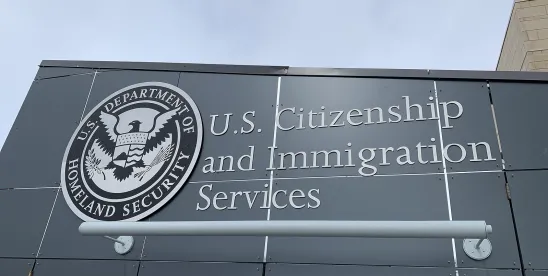The U.S. Supreme Court heard oral arguments this week in Trump v. CASA, a case that could limit the ability of lower federal courts to issue nationwide injunctions, within the context of a challenge to a 2025 executive order issued by President Trump that would deny automatic citizenship to children born in the U.S. to undocumented immigrants and individuals with temporary legal status. Lower courts had blocked the policy from taking effect nationwide. The government challenged both the scope of that relief and the underlying interpretation of the Fourteenth Amendment.
Judicial Power Questioned
The Court is now considering whether federal district courts can continue issuing injunctions that halt enforcement of federal policies across the country and beyond the specific plaintiffs of a given case. District courts have relied on nationwide or universal injunctions for at least the last fifty years to suspend executive action in policy realms that include topics such as immigration, vaccine mandates, Title IX, and “Don’t Ask, Don’t Tell.”
Critics of nationwide injunctions argue that they exceed the scope of judicial power granted in Article III of the U.S. Constitution, encourage forum shopping, and force judges to make quick decisions on difficult and high-stakes legal questions. Proponents of nationwide injunctions state that they are often necessary to protect civil liberties, avoid confusion, and prevent proliferation of litigation.
While the Justices’ views on the constitutionality of President Trump’s Executive Order are expected to fall down party lines and appeared discernable from their questions and comments at oral argument, their views on the remedy—nationwide injunctions—are less predictable. During oral argument, the Justices almost universally expressed concerns about the practicality of eliminating nationwide injunctions while still providing litigants with expeditious avenues of relief. Some of the concerns raised by the Justices were: the hurdles of pursuing remedies through a class action, the Solicitor General’s reluctance to commit to abiding by a Court of Appeals’ precedent, and the burden on individual litigants.
The advocates before the Court offered a range of options that the Court might consider in deciding this issue. The United States’s position is that there should be a bright-line rule against nationwide injunctions. The state and city respondents encouraged the Court to reject a bright-line rule barring nationwide injunctions. Instead, New Jersey’s Solicitor General, representing a coalition of states opposing the Executive Order, offered three circumstances in which nationwide injunctions should be available: First, in circumstances in which a nationwide injunction is the only practical or legal workable way to remedy the harm for the parties (i.e. in the context of birthright citizen; Second, where Congress has so authorized; and Third, in cases where alternative forms of nonparty relief are not legally or practically available. The private party respondents alternatively suggested that the Court could limit universal injunctions to cases that challenge the constitutionality of a statute or policy involving fundamental constitutional rights.
Although the Court may sidestep the substantive issue here—how to interpret the Fourteenth Amendment’s Citizenship Clause—the unique challenges of citizenship highlighted the parties arguments on benefits and challenges of nationwide injunctions. For example, the Justices questioned how a patchwork of U.S. citizenship rules could be applied in practice if a nationwide injunction were not available.
Preparing for a Shift in Litigation Strategy
Organizations engaged in multi-state litigation, or that rely on early-stage injunctions to pause new federal rules, may see their options narrowed. A ruling that limits the availability of nationwide injunctions could require more targeted relief and could lead to inconsistent enforcement across jurisdictions.
This is a case to watch for companies, advocacy organizations, and public institutions navigating federal compliance and regulatory uncertainty. Those with exposure to immigration enforcement, benefits eligibility, or federal grant conditions should be particularly attentive to how the Court rules—and what it signals for executive authority going forward.
Next Steps
Given the potential for far-reaching change, it’s important for affected organizations to:
- Monitor the Court’s decision, expected by the end of the Term, expected in late June or early July 2025.
- Evaluate any reliance on nationwide injunctions in pending or anticipated litigation.
- Review internal policies involving citizenship status, particularly where eligibility for services or programs depends on current federal interpretation.
- Engaging experienced counsel early in the process can help clarify potential exposure and ensure flexibility in response to a decision that may reset the rules on both litigation remedies and immigration rights.




 />i
/>i
